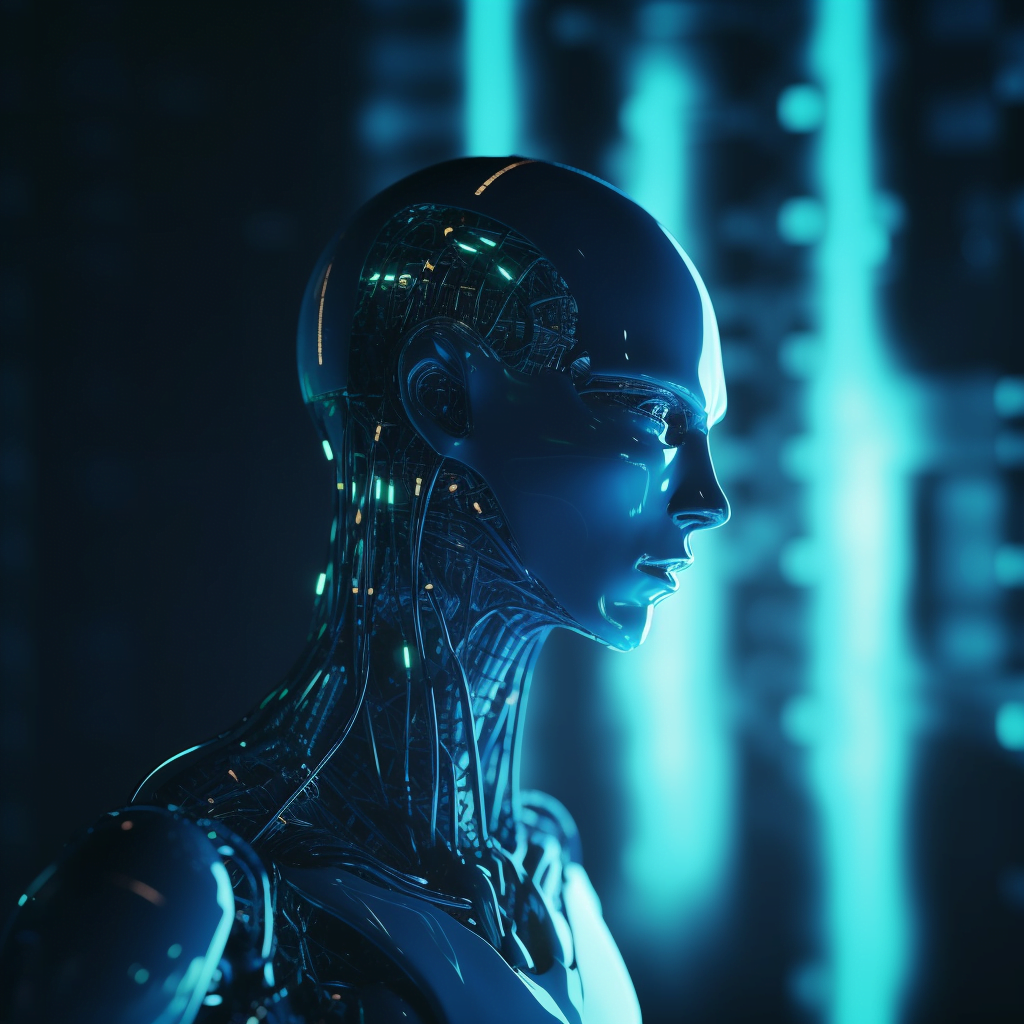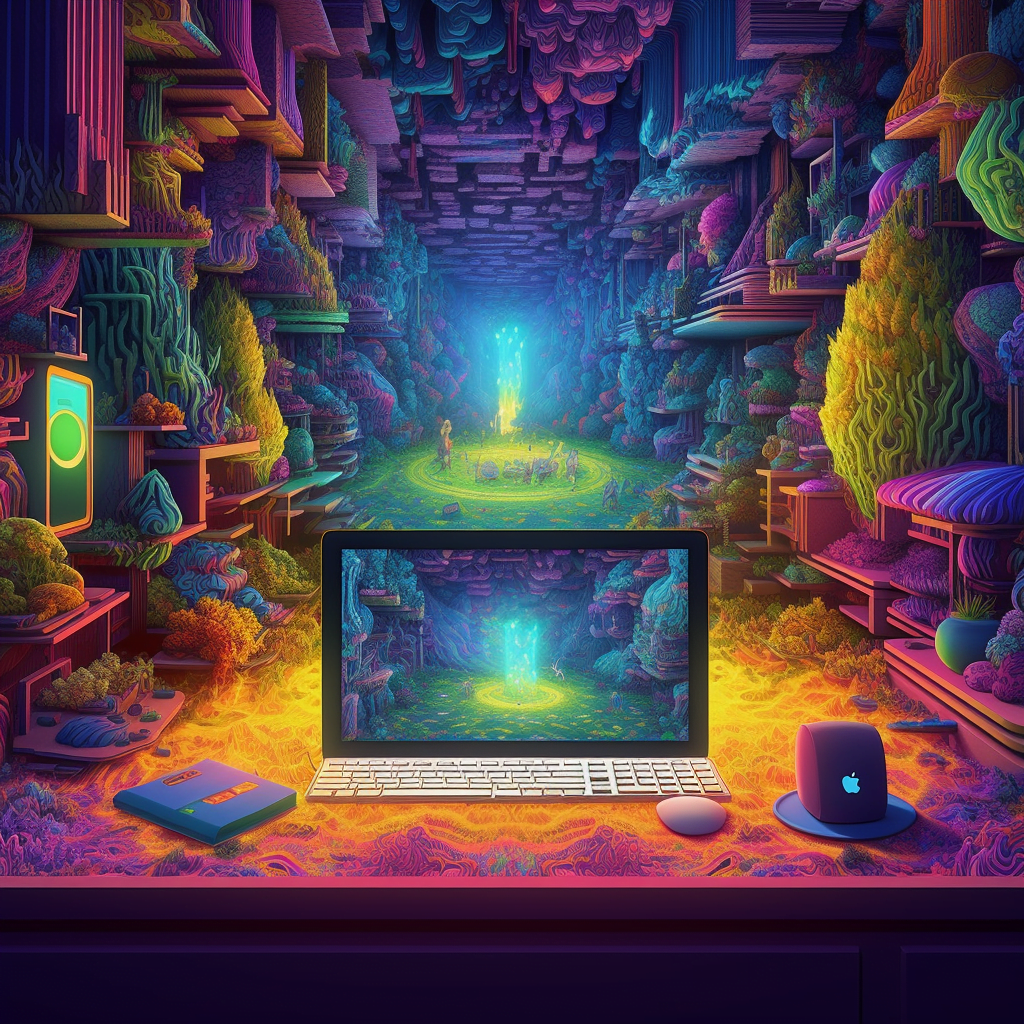
“By far, the greatest danger of Artificial Intelligence is that people conclude too early that they understand it.”—Eliezer Yudkowsky
Have you ever watched a sci-fi movie and wondered if those super-smart robots or AI systems could become a reality? I know I have. So, with that ominous prediction in hand, let’s dive into the world of Artificial General Intelligence (AGI).
Now, some of you might be asking yourself, “What on Earth is AGI?”
Well, for AI researchers — it’s the future.
For the rest of us — well, it’s probably our future too.
Because it will change everything we know about how the world functions. So, why not take a few minutes today and learn what the heck AGI actually is and how it works? In this complete noob’s guide, we’ll explore the ins and outs of AGI, its differences from other AI, and the key concepts and technologies behind it.
Let’s eat the red pill and jump into the Matrix, shall we?
What is Artificial General Intelligence (AGI)?

AGI stands for Artificial General Intelligence. Think of it as the ultimate multitasker, the jack of all trades in the AI world. It’s designed to learn and perform a wide range of tasks, just like you and me. In fact, AGI is meant to be as smart, creative, and adaptable as humans – maybe even smarter!
To give you a better idea, let’s look at some familiar AI examples.
Siri and Alexa are cool but creepy, right? They’re also limited in what they can do. They can tell you the weather or play your favorite tunes, but they can’t hold a deep conversation about the meaning of life or whip up a gourmet meal. That’s where AGI comes in.
With AGI, we’re talking about an AI that can not only chat with you about existentialism but also paint like Picasso, write code like a pro, and even discover new scientific breakthroughs or fashion new forms of peanut-butter tuna sandwiches.
Mind-blowing, isn’t it?
Human-like Learning
One of the key features that sets AGI apart from other AI is its ability to learn like a human. Instead of being pre-programmed to perform specific tasks, AGI can learn from its experiences, adapt to new situations, and even teach itself new skills. It’s like having an AI buddy that’s always learning and growing, just like you.
This human-like learning is made possible through advanced AI techniques like machine learning and deep learning (more on those later). These techniques enable AGI to learn from vast amounts of data, identify patterns, and make decisions or predictions based on that knowledge.
Cross-domain Mastery
Another unique aspect of AGI is its ability to excel across multiple domains. While narrow AI is confined to its specific task, AGI can apply its knowledge and skills to a wide range of areas. In other words, it can connect the dots between different fields and come up with innovative solutions.
For example, AGI could use its understanding of biology to help develop new medicine, apply its knowledge of physics to design more efficient transportation systems, or even use its expertise in art and music to create breathtaking masterpieces. The possibilities are virtually endless.
Creativity and Problem Solving
When it comes to creativity and problem solving, AGI is designed to think outside the box. It can come up with new ideas, solve complex problems, and even generate original content like stories, music, or art. It’s like having an AI partner that can brainstorm with you, challenge your ideas, and inspire you to think bigger and bolder.
Now that we’ve taken a closer look at AGI, let’s move on to some of the key concepts and technologies that make it possible. Don’t worry, I’ll keep it light and easy to understand, so you can keep impressing your friends with your AGI expertise.
AGI vs. Narrow AI

To truly grasp the magic of AGI, we need to compare it to its more limited cousin, narrow AI. Think of it as a friendly showdown between the two, where we highlight their unique strengths and weaknesses.
Adaptability
- Narrow AI: Narrow AI is like a talented specialist – it’s fantastic at its specific job, but it doesn’t know how to do anything else. It’s been designed and programmed to perform a particular task, and that’s it. For instance, a chess-playing AI might be unbeatable on the chessboard, but it wouldn’t have a clue about cooking up a delicious spaghetti bolognese.
- AGI: On the flip side, AGI is the ultimate generalist. It’s able to learn and adapt to new tasks and situations, much like a human can. AGI is more like a Renaissance man, excelling in multiple domains and always eager to learn something new.
- In our example from above, AGI could not only play chess but also cook that spaghetti bolognese – and maybe even recite poetry while doing it!
Versatility
- Narrow AI: While narrow AI excels in its designated domain, it’s pretty much useless outside of it. It’s like having a world-class chef who can cook only one dish. Sure, that dish might be amazing, but it would get old pretty fast, right?
- AGI: AGI, on the other hand, is the Swiss Army Knife of AI. It’s incredibly versatile, able to perform a wide range of tasks with ease. Need help with your math homework? AGI’s got your back. Want to learn a new language? AGI can teach you. Feeling down and need a pep talk? AGI is there for you, too. It’s the ultimate AI companion for any situation.
Learning
- Narrow AI: When it comes to learning, narrow AI is a bit of a one-track mind. It can learn and improve within its specific domain, but it can’t branch out into new areas. It’s like having a conversation with someone who’s only read a single book – they might know that book inside and out, but they can’t offer much else in terms of knowledge or insights on any other subject.
- AGI: In contrast, AGI is like a lifelong learner, constantly soaking up knowledge from multiple domains and applying that knowledge in different contexts. AGI can learn across various fields and use its diverse knowledge to come up with innovative solutions and ideas. It’s like having a conversation with a polymath, someone who’s well-versed in many different subjects and can draw connections between them.
Now that we’ve compared AGI and narrow AI, you should have a clearer understanding of what sets AGI apart. It’s time to dive into the key concepts and technologies that make AGI possible.
Key Concepts and Technologies Behind AGI

Before we dive into the nitty-gritty of AGI’s building blocks, let’s take a step back and set the stage. Picture AGI as a huge bowl of chili con carne we’re trying to brew. Each ingredient represents a different technology or concept, and when mixed up, given time to simmer, and then served up in a package, can create something truly remarkable (and possibly tasty).
Machine Learning: AI’s Personal Trainer
Machine learning (ML) is like the personal trainer of AGI. It’s a subset of AI that focuses on teaching computers how to learn from data and make predictions or decisions, all without being explicitly programmed. In other words, ML helps AI get stronger and smarter over time.
Remember when Facebook started recognizing your friends’ faces in photos? That’s machine learning at work. It’s also behind those clever movie recommendations on Netflix and even helps self-driving cars navigate the roads.
If you're curious, here's a good beginner's guide to machine learning.
Deep Learning: The Brainy Cousin
Taking things a step further into the AI world, we have deep learning. It’s a type of machine learning that uses artificial neural networks (ANNs) to mimic the way our brains process information. You could think of deep learning as ML’s brainy cousin – it goes deeper (pun intended) into the learning process.
Deep learning is responsible for some seriously impressive AI feats, like Google’s AlphaGo defeating the world champion in the ancient board game Go, or Google’s DeepMind mastering the video game StarCraft II.
For more information about deep learning, here's an in-depth article.
Neural Networks: The AI Brain
Now, let’s talk about neural networks, the key component of deep learning. Neural networks are like the AI brain, with interconnected “neurons” that process and transmit information. They’re modeled after the human brain, which allows them to learn and adapt in a similar way.
These networks are the secret sauce that makes deep learning possible, and they’re crucial to AGI’s development. Imagine an AI with a brain that can learn, think, and adapt just like ours – that’s the power of neural networks!
Head over here to learn more about neural networks and how they work.
By combining these cutting-edge concepts and technologies, we’re getting closer to making AGI a reality. But as with any great adventure, the road to AGI is filled with exciting breakthroughs and challenges, which we’ll explore next. Hang on tight, noobs – the journey’s just beginning!
The Road to AGI

So, when will AGI finally become a reality? Well, that’s the million-dollar question (or, if you’re Elon Musk, the multi-billion-dollar question).
The truth is, no one knows for sure when AGI will be achieved. Some experts believe we’re just a few years, some say decades away, and others think it might take a century or more if it’s even possible.
- The forecasting platform Meticulus predicts AGI will come anytime between 2027 and the 2040s
- A simple meta-analysis of surveys over the past 10 years shows AI researchers have a lot of mixed opinions, but the strongest ones are that AGI will come by 2060 or far later or not at all.
- Another large survey of AI scientists, this time performed in 2022, revealed 90% believed we’ll see it in the next 100 years, and half said before 2061.
One thing’s for sure, though: the road to AGI is paved with exciting breakthroughs and challenges. Let’s take a look at some key milestones we need to reach and obstacles we need to overcome to get there.
AGI’s Progress Markers
- Better Algorithms: As we develop more advanced algorithms and models, we get closer to achieving AGI. It’s like giving our AI a bigger and better toolbox to work with, unlocking new possibilities and capabilities.
- More Data: AGI needs a massive amount of data to learn and grow. As we collect and process more data, we’re essentially fueling the AGI engine, inching closer to the finish line. Every cat video you watch might be contributing to AGI’s development…so, you better relocate those drinks; our cat-video-loving PCs could get pawsitively mischievous.
- Increased Computing Power: To run these advanced algorithms and process all that data, we need some serious computing power. Luckily, we’re living in an age of rapid advancements in this area. Quantum computing, anyone? As this comes into reality, the rapid growth towards a real AGI will be extremely sped up. By 2030, it’s estimated there will be several thousand quantum computers in existence.
AGI’s Development Hurdles
- Ethics and Safety: Of course, with great power comes great responsibility. So, as we develop AGI, we need to consider the ethical implications and ensure its safe deployment. We don’t want a real-life Skynet on our hands in the future. And we don’t want it to be back, either (Sorry Arnold). A solid framework for AI ethics and safety is essential to prevent potential misuse or unintended consequences.
- Resource Allocation: AGI requires substantial resources, like funding and human talent. Take OpenAI’s ChatGPT for example. The third version of it, GPT-3, had 175 billion parameters of stored information, requiring about 800 GB of hard drive space. GPT-4 is now out and is leagues above, with estimates of 100 trillion parameters. Unfortunately, OpenAI hasn’t released any of the specifics on how it was built, likely due to the non-profit turning into a for-profit company. Another reason might be the underlying programming could be incredibly easy to replicate, as recently happened with a leak from Facebook’s AI. In any case, it’s crucial to allocate these resources efficiently to ensure progress without leaving other important areas behind. We don’t want to create a world where AGI is achieved, but we’ve forgotten about vital issues like healthcare, education, or the environment.
- Collaboration: The development of AGI is a global effort, requiring collaboration between researchers, institutions, and governments. Unfortunately for all of us, geopolitical concerns, as well as for-profit companies trying to monetize early versions are hindering a unified front for development. A large group of industry professionals even called for a 6-month development hiatus worldwide, but of course, it’s largely being ignored.
The road to AGI is a thrilling, challenging, and uncertain journey, but it’s one that holds the promise of a future filled with incredible possibilities. AGI may just be the beginning of a whole new chapter in human history.
What is the Future of AI?
Let’s take a moment to gaze into the AI crystal ball and contemplate what the future might hold. Will AGI bring about a utopia where machines work alongside us, helping us solve humanity’s greatest challenges? Or will we end up in a dystopian nightmare where AI runs amok, and Governor Arnold has to come back to save us from ourselves?
Let’s explore some potential scenarios.
If AI is Our Ally
In an ideal world, AGI becomes our trusted partner, working alongside us to tackle the world’s most pressing issues. Imagine an AI that helps us develop new medicines, find innovative solutions to climate change, or even discover the secrets of the universe.
With AGI by our side, the possibilities are virtually endless.
In this future, AI could:
- Improve healthcare by diagnosing diseases more accurately and developing personalized treatment plans.
- Enhance education by creating customized learning experiences tailored to each student’s needs.
- Boost productivity by automating mundane tasks, freeing us up to focus on more creative and fulfilling work.
- Foster global collaboration by breaking down language barriers and connecting people from all walks of life.
- Transform politics to reduce partisanship, corruption, and inefficiency
- Reform the justice system, reducing false cases, biased judging, and help reduce the overall amount of crime in society
If AI is on the Dark Side
But let’s not forget that every rose has its thorns. There’s always the possibility that AGI could be misused or cause unintended consequences.
In a less-than-ideal scenario, AGI might:
- Displace jobs and create social and economic upheaval.
- Be used for nefarious purposes, like developing advanced weapons or enabling mass surveillance.
- Cause ethical dilemmas as we grapple with questions of AI rights and responsibilities.
- Lead to a loss of human connection as we become increasingly reliant on machines.
- Make incorrect society-transforming decisions because of a lack of similar ‘morals’ or standards we have.
- Be abused by an individual, company, or country with a comparative advantage in AGI development. Think nuclear bombs we’re bad? Just wait.
The Future of AGI

As our wild ride through the world of AGI comes to an end, it’s clear that we’re at the precipice of a potentially game-changing era. The future of AI could be an incredible partnership with AGI, unlocking new frontiers and revolutionizing life as we know it. Or, we might face some pretty gnarly challenges along the way, grappling with ethical dilemmas and ensuring we keep our AI buddies in check.
No one can predict the future, but one thing’s certain: we’ve just embarked on an incredible journey.
As we continue to explore and shape the world of AGI, we as a society have to remember to keep our heads on straight, stay grounded, and above all, make sure we’re using these powerful tools for the betterment of humanity, not an individual or small group.
So, whether you’re a fellow noob or an AI aficionado, let’s embrace this Brave New World together. And hey, while we’re waiting for AGI to join us for a chat about existentialism, we can still enjoy the simple pleasures of asking Siri to play our favorite tunes, or watching Alexa hilariously misunderstand our requests, or asking ChatGPT to make incredibly bad AI dad jokes.
After all, we’ve come a long way, and the future – bright or dark – is ours to shape.
“The future is not a gift-it is an achievement.”- Albert Einstein or Robert Kennedy, according to our broken internet
Written by J.J. Pryor…or was it?
👇For more essays and shenanigans, come check out Pryor Thoughts.👇
Resources for More Learning About AGI
- An interesting piece by Noahpinion on the future of work in AI
- Here’s a 20-minute documentary by Forbes on how AGI will reset the future
- Wired wrote up a good overview of the development, status, and future of AI
- McKinsey has a good “executive primer” on what an AGI would need to do
Know any more? Show me in the comments!
You might also want to know how to setup the ChatGPT API in Python or what ChatGPT actually means.




